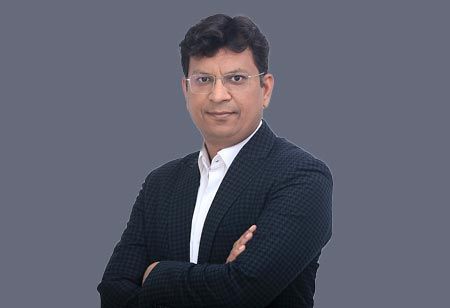
In an exclusive interaction with Homes India Magazine, Ajay Gupta, Founder and Principal Consultant at Perceptive Ideas, shares his thoughts on the structural design engineering and new materials that are being developed to make buildings more adaptable, efficient, and resilient. He explains the integrating systems of IoT-based monitoring in design technology, strain gauges, accelerometers, corrosion sensors, among others. Engineers get real-time data on the structural performance. Ajay Gupta is widely respected for his clarity in design, sustainability focus, and strategic leadership that has positioned Perceptive Ideas among the Top 10 Engineering Services Startups of 2024.
What are the evolving trends driving structural design globally and in India?
Structural Design is fast changing with urban densification, climate resilience, and digital integration being among some of the key driving forces. In the global scenario, there appears to be a trend towards performance-based design where the buildings are not only code compliant but also resilient, sustainable, and considered for lifecycle performance from a given set of design alternatives. In the Indian context, urbanization and infrastructure modernization are fueling the introduction of modular construction, precast systems, and PEB (Pre-Engineered Buildings) for fast, cheap, and sustainable solutions. At the same time, there is an urgent need for BIM to become the nucleus of multi-disciplinary coordination and lifecycle asset management. Adaptation of structures for green-building rating, seismic resilience, and net-zero goals stands as another major trend.
In what ways are smart materials revolutionising future structural engineering?
To redefine or improve structural engineering, new materials are being developed to make buildings more adaptable, efficient, and resilient. The applications of shape memory alloys, self-healing concrete, and fiber-reinforced polymers should no longer be regarded as theoretical and instead should be aimed at reducing cracking, protecting flexibility, and countering dynamic loads. These assimilation materials combine lifecycle maintenance and monitoring and make possible a structural health monitoring and real-time reaction to altering loading or prevailing conditions. An example would be the self-healing concrete, which is capable of developing occlusions to loading-induced microcracks and would thus enhance long-term serviceability of the bridge and water retaining structures to a large extent.
Also Read: Check Out the Best Air-Purifying Plants for Indian Households
What are the most important design considerations to make high-rise buildings serviceable?
Practice of serviceability for high-rise comprises building comfort and function considerations concerning long-term behaviour in working loads. The Lateral load resistance is efficient in design against wind and seismic, utilizing the core-wall system or outrigger truss. Deflection and vibration limits deflection and vibration of floors, beams, and slabs, which should not produce discomfort or structural fatigue. Material selection and creep/shrinkage control are especially relevant for tall buildings; long-term deformations are a concern. Foundation behaviour and soil-structure interaction in cities with varying strata; foundation design directly impacts building serviceability.
Also Read: Understanding the Changing Dynamics of Luxury Homebuyers in India
How is predictive maintenance to be merged with structural design to ensure long-term durability?
Predictive maintenance increasingly forms part of the integral structures' design through embedded sensors, digital twins, and data analytics. By integrating an IoT-based monitoring system in design, say strain gauges, accelerometers, corrosion sensors, among others, engineers get real-time data on the structural performance. The system enables the detection of anomalies early enough for preventive interventions. Indian structures oftentimes face heavy loading, climatic stress, or poor maintenance regimes. Hence, predictive systems that ensure asset longevity and safety can do wonders there. Designing for maintainability, from accessibility down to modularity, also supports predictive maintenance.
What will your vision for structural design in 10 years for city infrastructure be?
Structural design for the future city will focus on intelligence, resilience, and flexibility. The future vision is a landscape where infrastructure is digitally enabled in all critical assets, so that there exists a digital twin to enable real-time monitoring of systemic performance and proactive maintenance of the infrastructure. Green, circular re-uses of material designs, and cradle to cradle will be the way of the future. The Disaster-resilient Infrastructure will be configured in such a way that it responds to the cases of systems controlled by climate extremes, flood-resistant metro stations, or earthquake-resistant school infrastructure. The modern construction will be speedier, cleaner, and more modular in line with the demand of the urban areas. Community-focused design tends to be more than a safety-intensive structure and more inclusive of wellness, walkable, and utility to the masses.
Perceptive Ideas is the view of structure design as not just engineering but a key through which safer, smarter, and more livable cities can be created.
We use cookies to ensure you get the best experience on our website. Read more...
Copyright © 2025 HomesIndiaMagazine. All Rights Reserved.